VIII.5.15 Pompeii. Garden entrance to Garden Restaurant.
Linked to VIII.5.16 and VIII.5.38. Excavated 1882.
Part 1 Plan

VIII.5.15 Pompeii. December 2006. Entrance, looking west.

VIII.5.15 Pompeii. September 2004. Room 1, looking west.

VIII.5.15 Pompeii. May 2017. Room 1, looking west to stairs to upper floor in north-west corner. Photo courtesy of Buzz Ferebee.


VIII.5.15 Pompeii. October 2022. Remains of terracotta puteal. Photo courtesy of Klaus Heese.

VIII.5.15 Pompeii. March 2009. Room 1, stairs to upper floor against north wall.

VIII.5.15 Pompeii. May 2017. Room 1, downpipe in north wall above stairs. Photo courtesy of Buzz Ferebee.

VIII.5.15 Pompeii. October 2022.
Room 1, looking north into small room under stairs, latrine? Photo courtesy of Klaus Heese.

VIII.5.15 Pompeii. March 2009. Room 1, small room under stairs, latrine? Looking north.

VIII.5.15 Pompeii. March 2009. Room 1, north wall of latrine with downpipe, under stairs.

VIII.5.15 Pompeii. March 2009. Room 1, upper north wall.

VIII.5.15 Pompeii. March 2009. Room 1, west wall.

VIII.5.15 Pompeii. May 2017.
Room 1, stairs to upper floor against north wall, with small room below. Photo courtesy of Buzz Ferebee.

VIII.5.15 Pompeii. March 2009. Doorway in south wall of room 1, leading directly to portico of VIII.5.16

VIII.5.15 Pompeii. March 2009.
Room 1, doorway and step to room 2 which was a large open area, in south-west corner of room 1.

VIII.5.15 Pompeii. March 2009. Room 1, south wall.

VIII.5.15 Pompeii. March 2009. Room 2, looking south.
On the south side of the large uncovered area, eighty wine amphorae were found many of which were inscribed.

VIII.5.15 Pompeii. c.1930. Impluvium in atrium, the room
accessible from the entrance at VIII.5.15.
DAIR 41.763. Photo ©
Deutsches Archäologisches Institut, Abteilung Rom, Arkiv.
See Pernice, E. 1938. Pavimente und Figürliche Mosaiken:
Die Hellenistische Kunst in Pompeji, Band VI. Berlin: de Gruyter, see taf. 47.3)

VIII.5.15 Pompeii. March 2009. Room 3, south side of remains of kitchen, with hearth.

VIII.5.15 Pompeii. March 2009. Room 3, south side of remains of kitchen, with hearth.

VIII.5.15 Pompeii. March 2009.
Area of room 4. This area was probably a large storeroom/deposit for the many amphorae found on the south side.

VIII.5.15 Pompeii. October 2022.
Room 2, looking towards north-east corner, with very high recess in east wall. Photo courtesy of Klaus Heese.

VIII.5.15 Pompeii. March 2009. Room 2, east wall with very high recess or niche.


VIII.5.15 Pompeii. October 2022. Room 2, niche in upper east wall. Photo courtesy of Klaus Heese.

VIII.5.15 Pompeii. March 2009. Room 2, niche or recess on east wall.

VIII.5.15 Pompeii. October 2022. Room 2, terracotta puteal set against east wall. Photo courtesy of Klaus Heese.

VIII.5.15 Pompeii. May 2017. Room 2, looking towards doorways in north wall.
The small room under the stairs in room 1 can be seen on the right.
Room 8 a cubiculum is the doorway on the left, the doorway into room 9 which was another cubiculum is in the centre.
Photo courtesy of Buzz Ferebee.

VIII.5.15 Pompeii. October 2022. Doorway to room 9 in north wall, on left. Photo courtesy of Klaus Heese.

VIII.5.15 Pompeii. October 2022.
Doorway to room 9, looking north across flooring. Photo courtesy of Klaus Heese.

VIII.5.15 Pompeii. October 2022. Room 9, detail of flooring. Photo courtesy of Klaus Heese.

VIII.5.15 Pompeii.
c.1930. Room 9, black and white mosaic in cubiculum.
See Blake,
M., (1930). The pavements of the Roman Buildings of the Republic and Early
Empire. Rome, MAAR, 8, (p.90 & Pl.34, tav.2).

VIII.5.15 Pompeii.
c.1930. Room 9, black and white mosaic in cubiculum.
DAIR 41.766. Photo © Deutsches Archäologisches Institut,
Abteilung Rom, Arkiv.
See Pernice, E.
1938. Pavimente und Figürliche Mosaiken: Die Hellenistische
Kunst in Pompeji, Band VI. Berlin: de Gruyter, see taf. 47.6)

VIII.5.15 Pompeii. October 2022. Room 9, detail from flooring. Photo courtesy of Klaus Heese.

VIII.5.15 Pompeii. October 2022. Room 9, detail of mosaic flooring. Photo courtesy of Klaus Heese.

VIII.5.15 Pompeii. October 2023. Room
9, west wall and north-west corner of cubiculum. Photo courtesy of Klaus Heese.
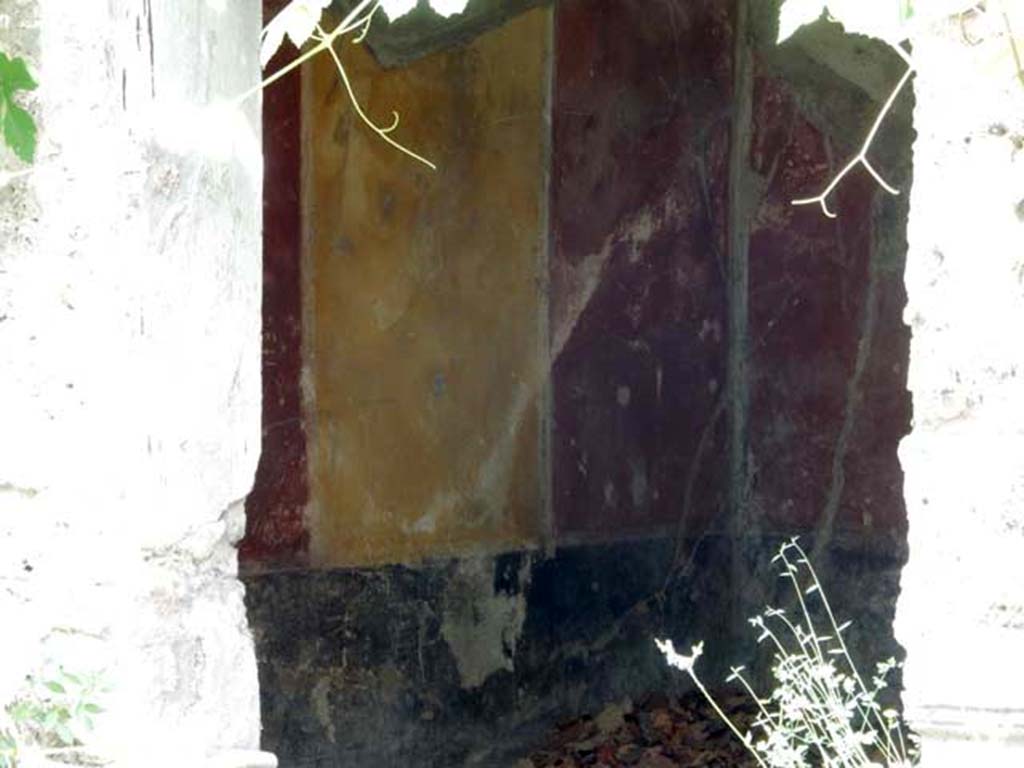
VIII.5.15 Pompeii. October 2022. Room 9, west wall and north-west corner of cubiculum. Photo courtesy of Klaus Heese.

VIII.5.15 Pompeii. May 2017.
Room 9, remains of painted decoration on west wall of cubiculum, and north-west corner. Photo courtesy of Buzz Ferebee.
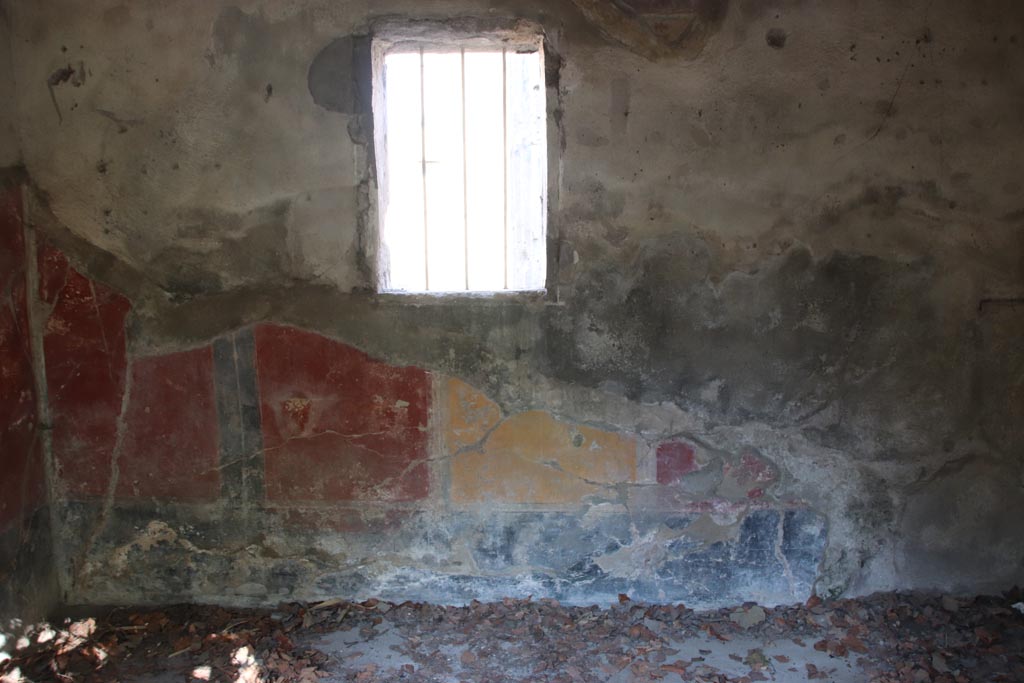
VIII.5.15 Pompeii. May 2017.
Room 9, remains of painted decoration on north wall in north-west corner of cubiculum. Photo courtesy of Buzz Ferebee.

VIII.5.15 Pompeii. October 2022. Room 9, looking towards north wall. Photo courtesy of Klaus Heese.
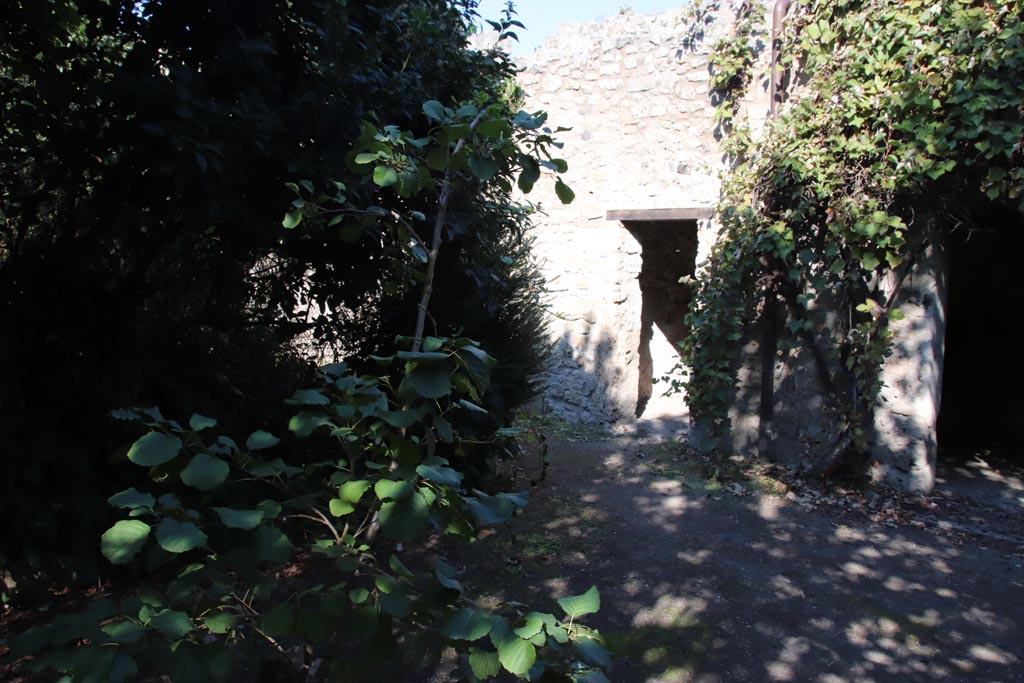
VIII.5.15 Pompeii. October 2022.
Room 9, north-east corner and east wall. Photo courtesy of Klaus Heese.


VIII.5.15 Pompeii. October 2022. Room 8, looking through doorway. Photo courtesy of Klaus Heese.
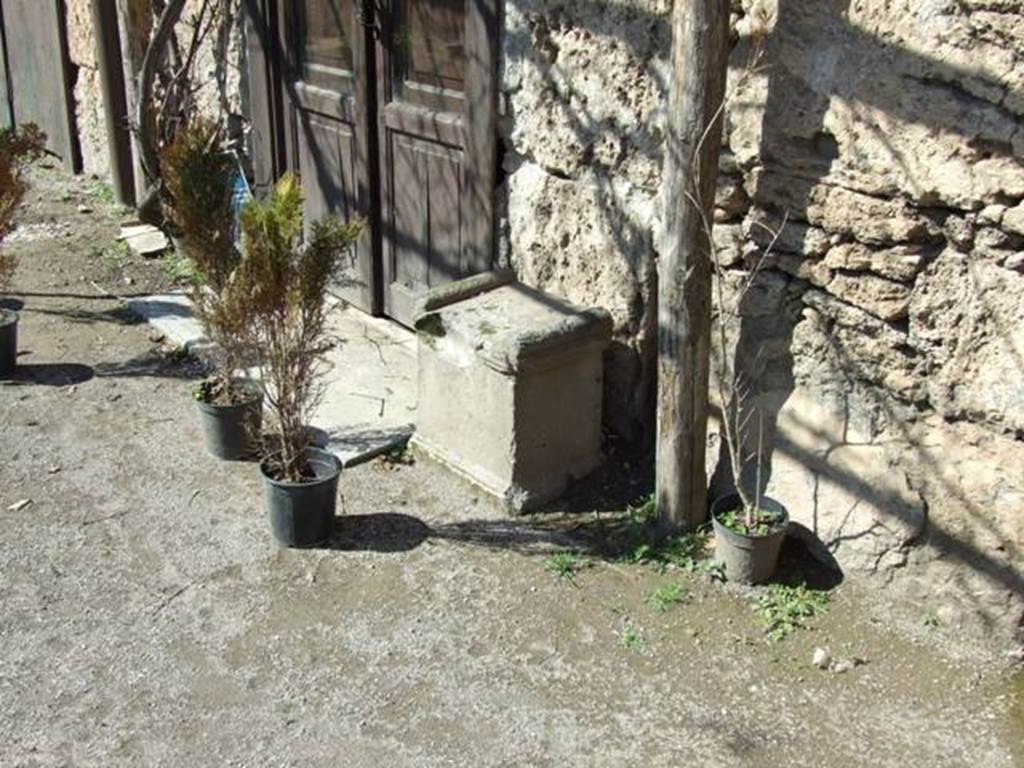
VIII.5.15 Pompeii. March 2009. Room 2, altar against north wall, next to closed doorway to room 9.
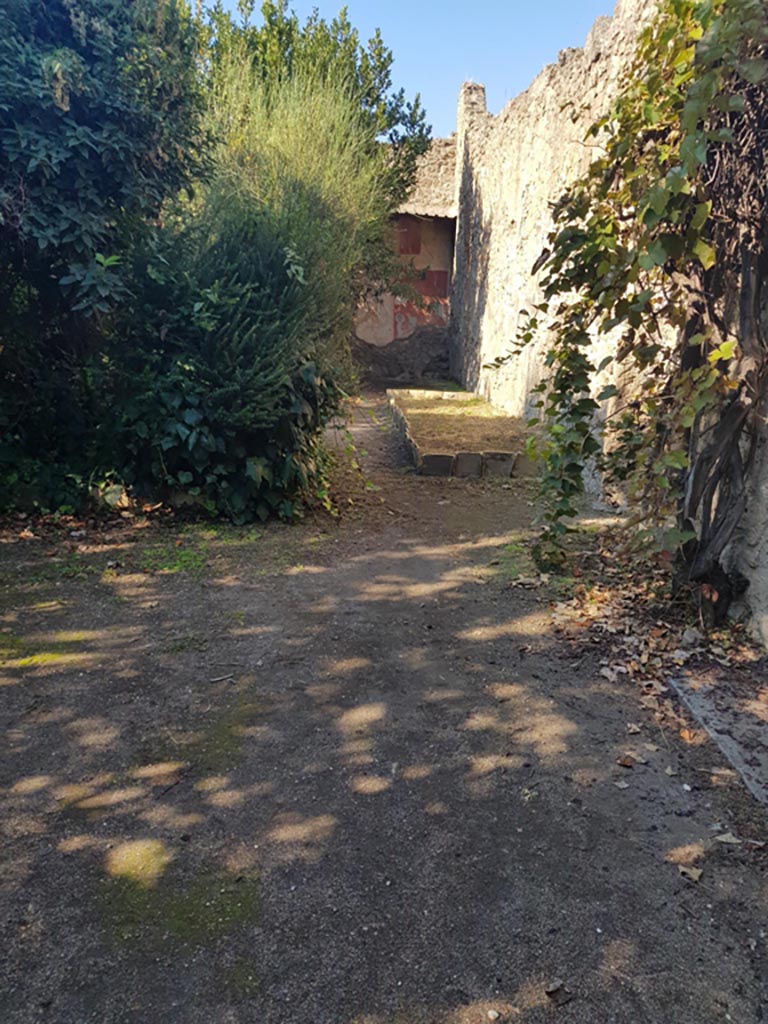
VIII.5.15 Pompeii. March 2009. Room 2, altar.

VIII.5.15 Pompeii. October 2022.
Room 2, looking west along north wall towards area of triclinium. Photo courtesy of Klaus Heese.
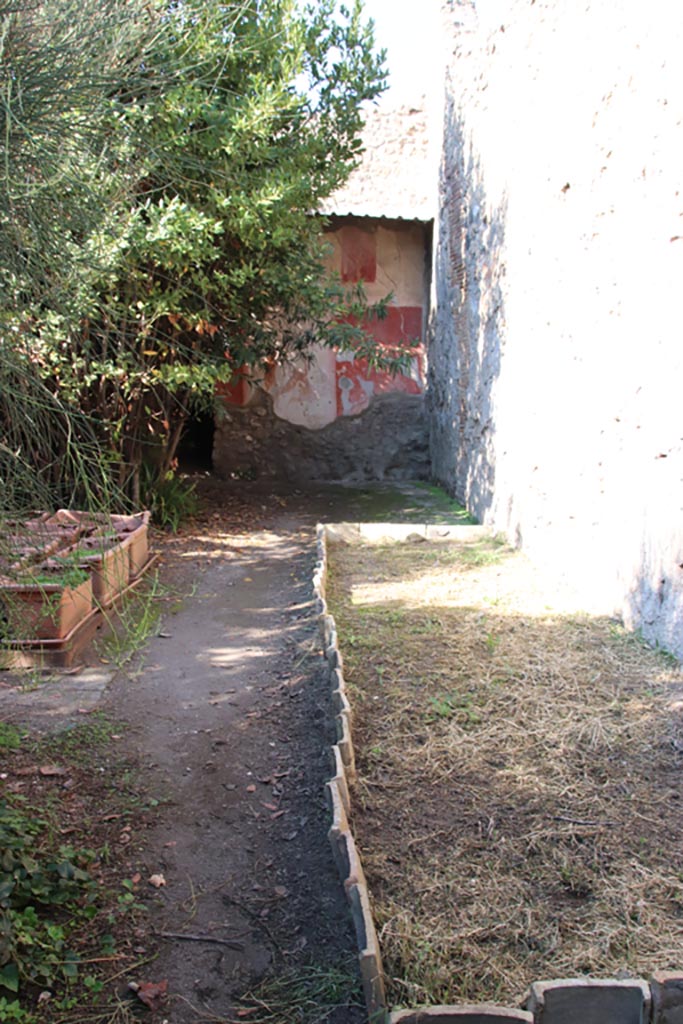
VIII.5.15 Pompeii. March 2009. Room 2, north wall with closed doorways to rooms 8 and 9.
At the far end of the north wall, on left, would have been a triclinium overlooking the large uncovered area.

VIII.5.15 Pompeii. October 2022.
Room 2, looking west towards area of large triclinium. Photo courtesy of Klaus Heese.

VIII.5.15 Pompeii. October 2023. Room 2, looking east along north wall from near triclinium area. Photo courtesy of Klaus Heese.
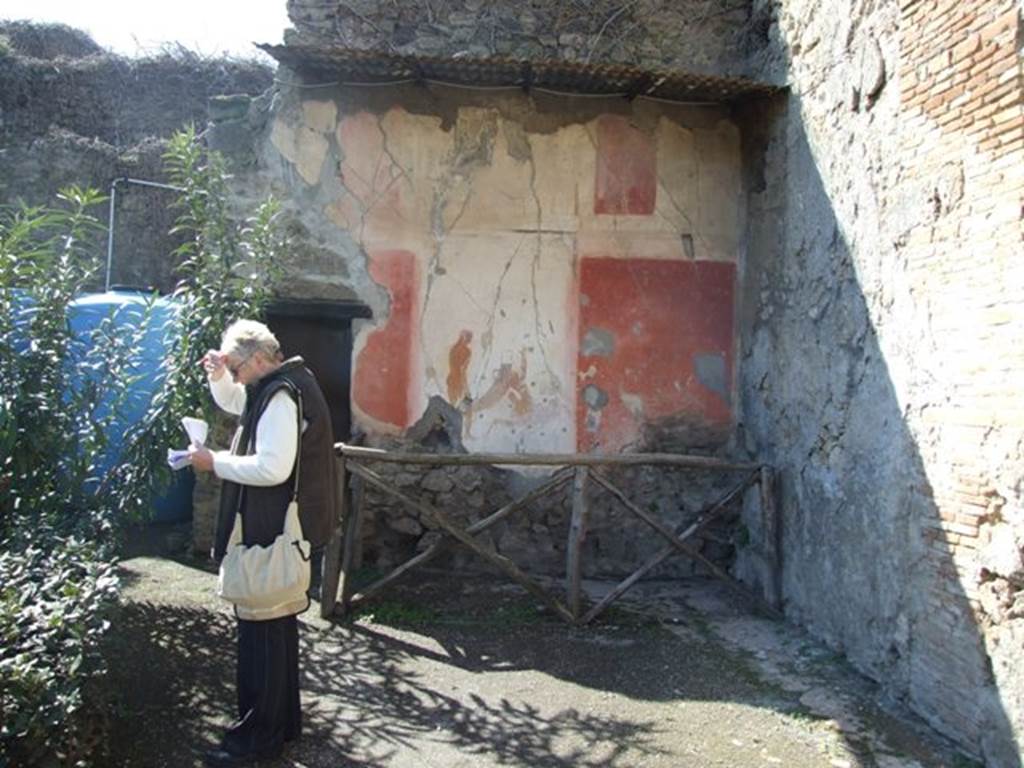
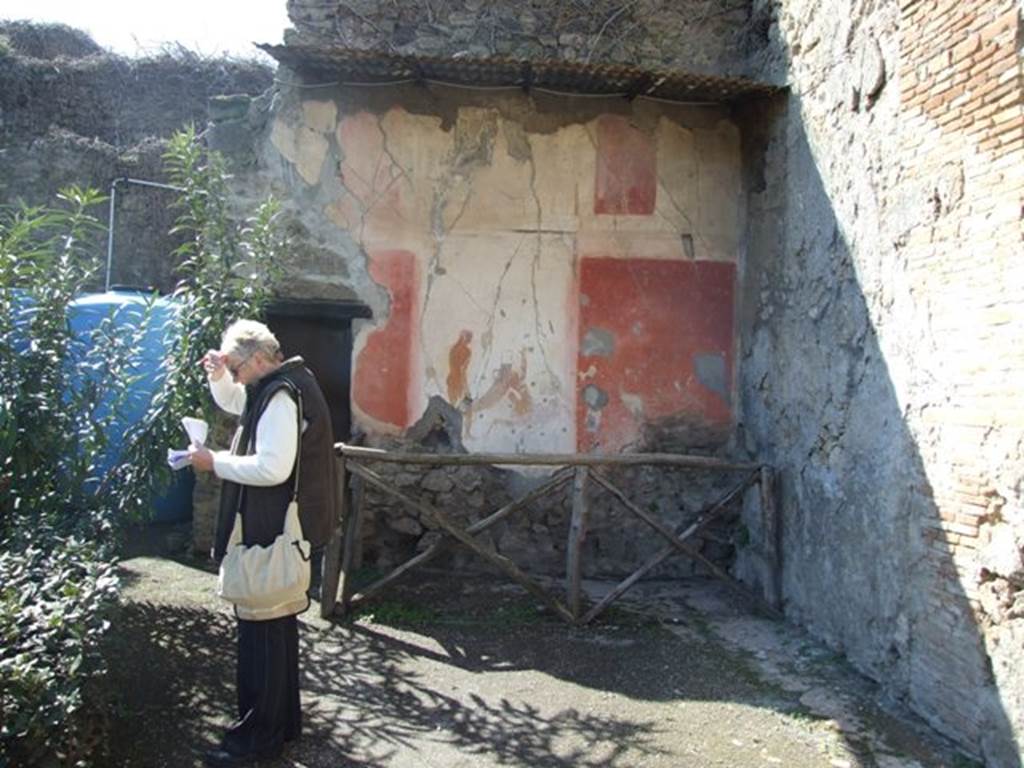
VIII.5.15 Pompeii. March 2009. Room 2, west wall of triclinium, with painted panels.
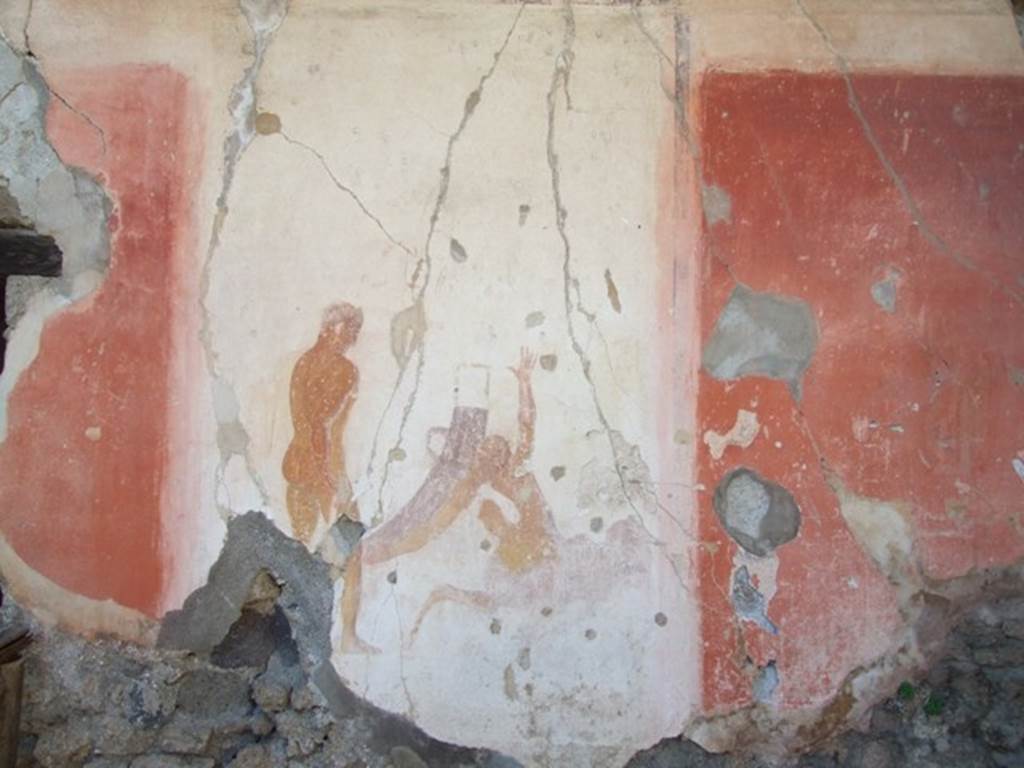
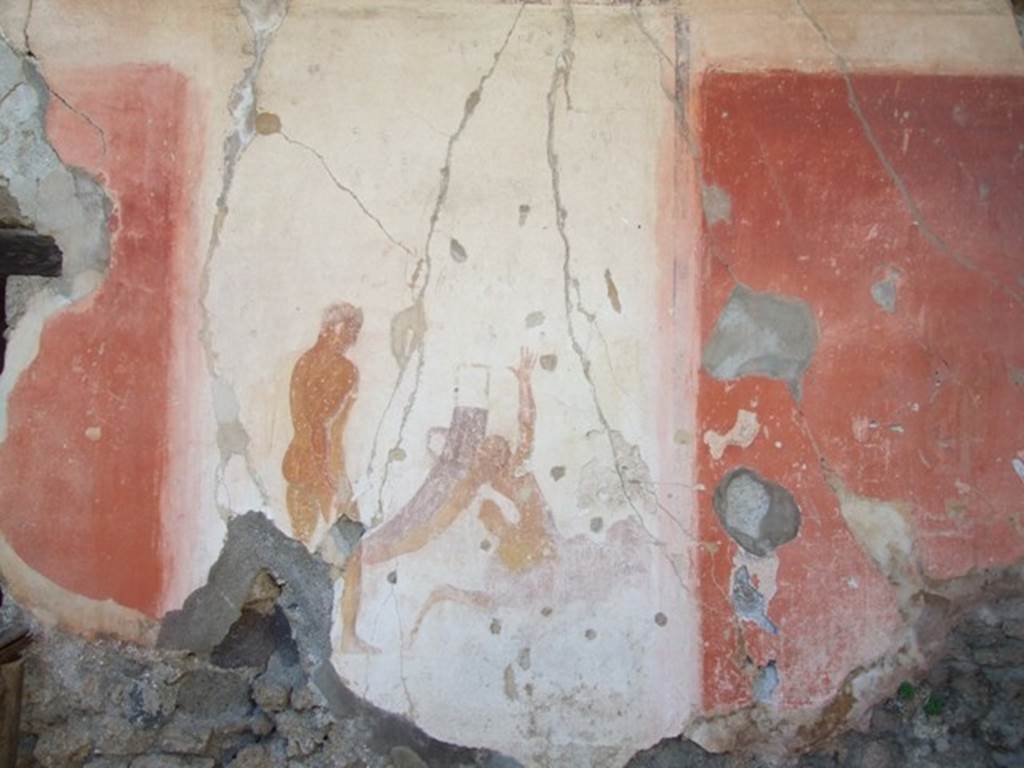
VIII.5.15 Pompeii. March 2009. Room 2, wall painting on west wall of triclinium.
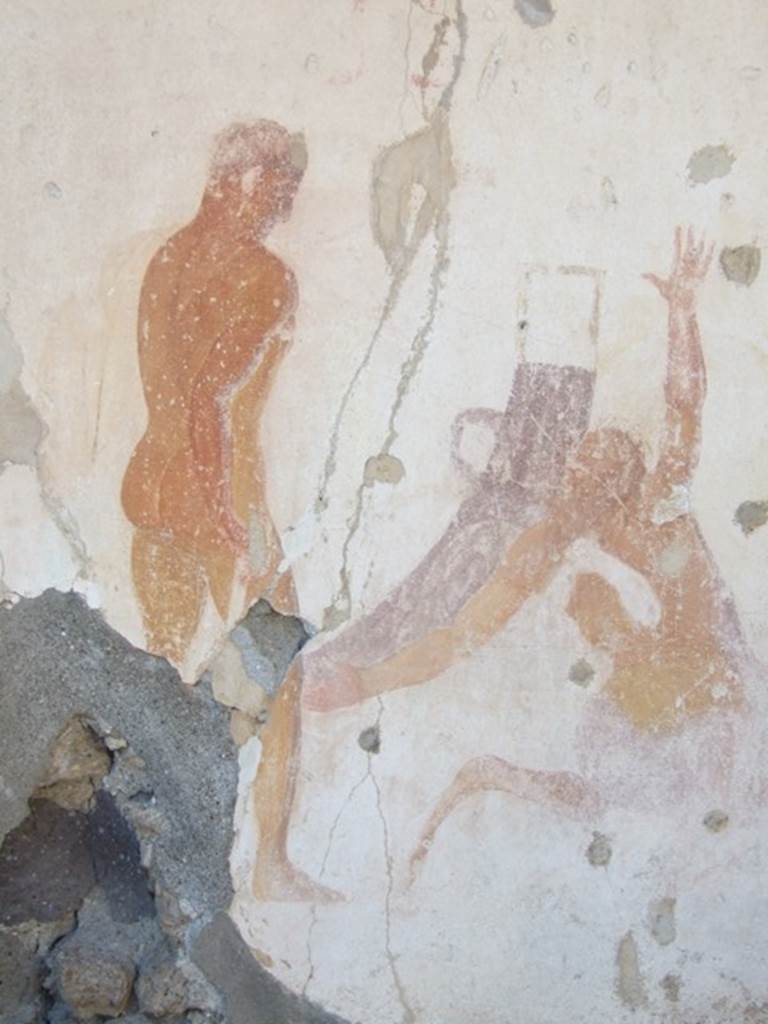
VIII.5.15 Pompeii. October 2022.
Room 2, detail of wall painting on west wall. Photo courtesy of Klaus Heese.
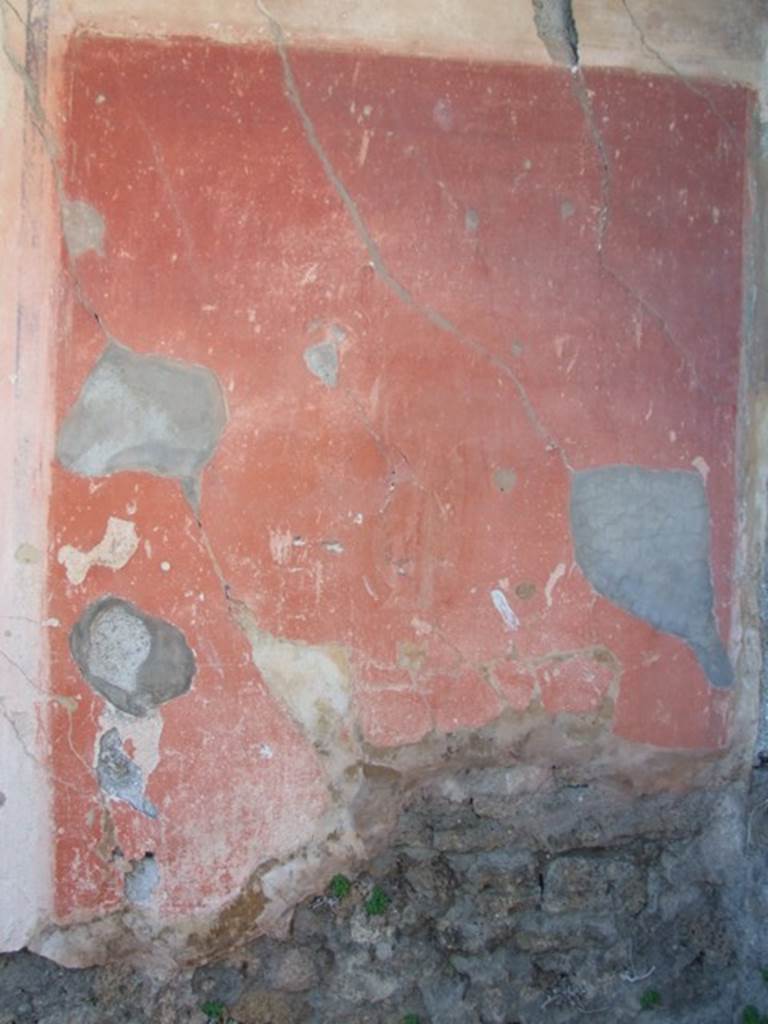
VIII.5.15 Pompeii. March 2009. Room 2, detail of wall painting on west wall.
According to NdS, on the west wall of this area was a representation (width 1.08, height 1.65) of the well-known subject of Hercules and Nessus.
On the left stood the hero, naked with his back to the viewer, carrying his lion-skin on his left shoulder, armed with a quiver and holding the club in his right hand.
He was watching the centaur, prostrate before him, reaching out with his arms or taking the baby from the arms of Deianira, who was seen veiled in the chariot in the background. Two white horses were attached to the chariot.
The conservation of it was not good, mainly in the figures of Deianira and the child, which were faded.
See Notizie degli Scavi di Antichità, 1882, (p.397).
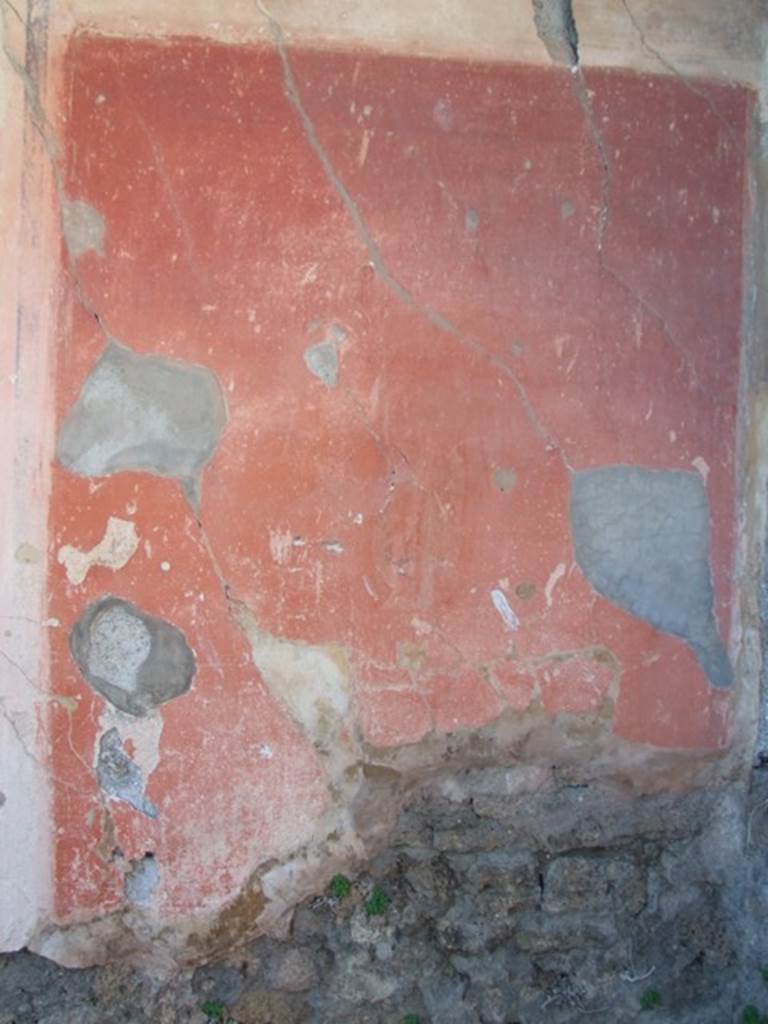
VIII.5.15 Pompeii. March 2009. Room 2, west wall, detail of painted panel.
On the same wall, in the red panel on the right, traces of a male figure could be seen (0.31 high) with a flute in each hand.
In a panel near the upper frieze, also with a red background, was a female figure with a lyre standing on a pillar, or perhaps Apollo.
See Notizie degli Scavi di Antichità, 1882, (p.397)
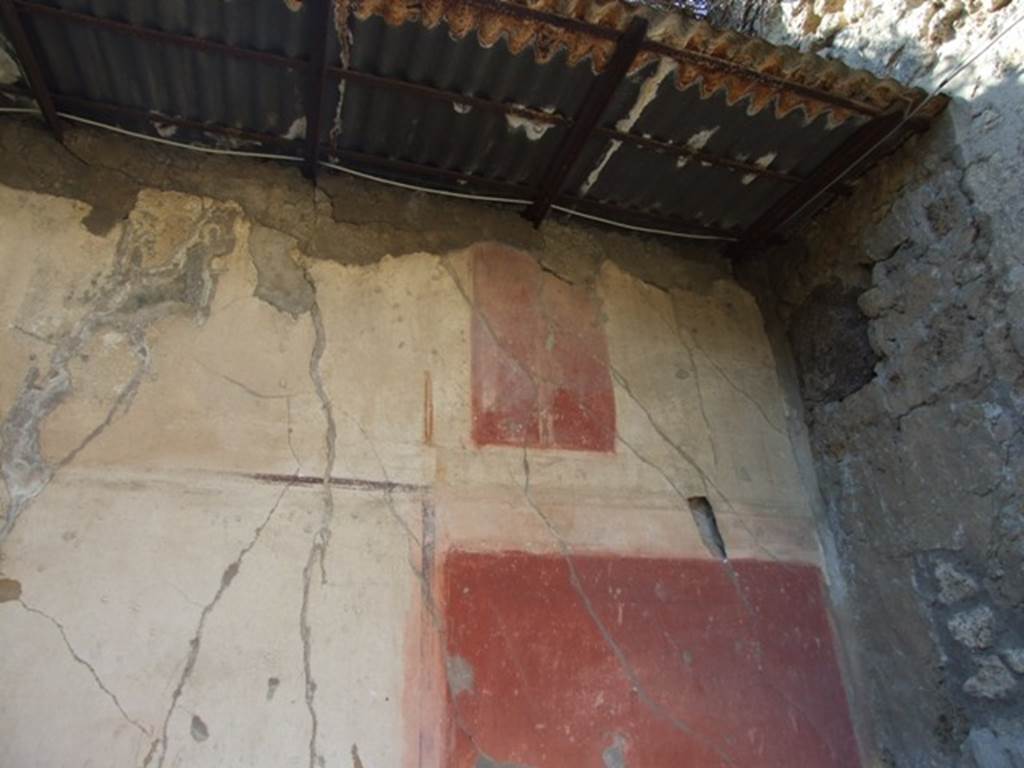
VIII.5.15 Pompeii.
Sketch by Discanno, from panel on west wall in Room 2, detail of male figure could be seen with a flute in each hand.
DAIR 83.192. Photo © Deutsches Archäologisches Institut,
Abteilung Rom, Arkiv.
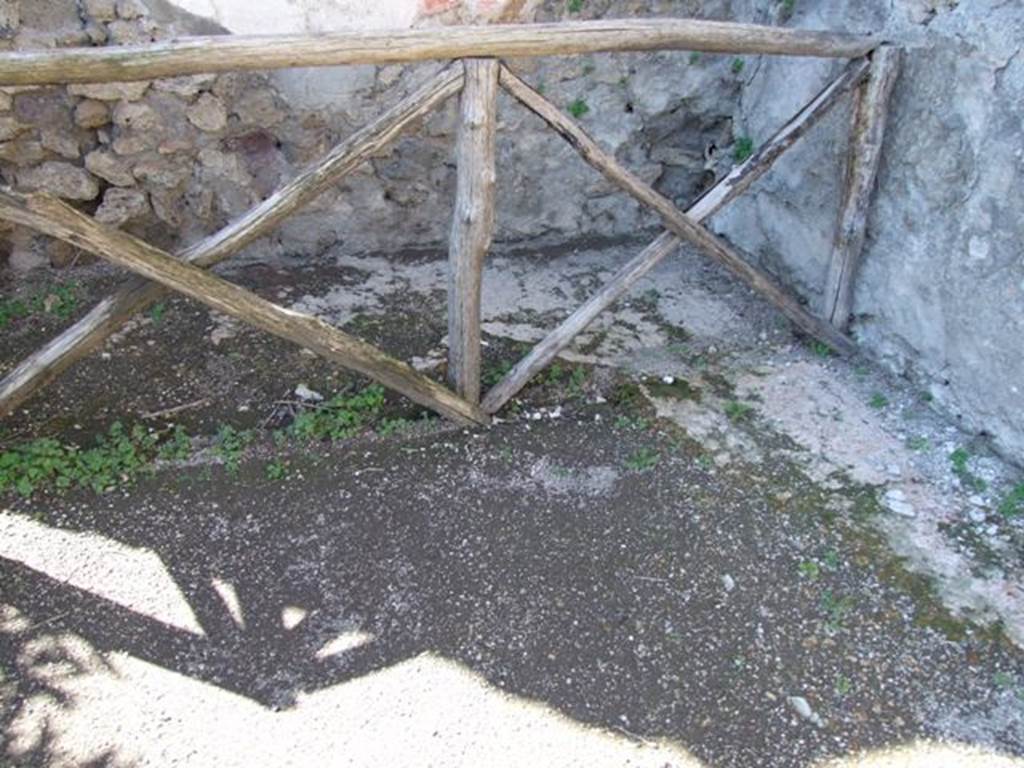
VIII.5.15 Pompeii. March 2009. Room 2, west wall.
In a panel near the upper frieze, also with a red background, was Apollo with his lyre standing on a pedestal or perhaps a female figure with a lyre.
See Notizie degli Scavi di Antichità, 1882, (p.397)
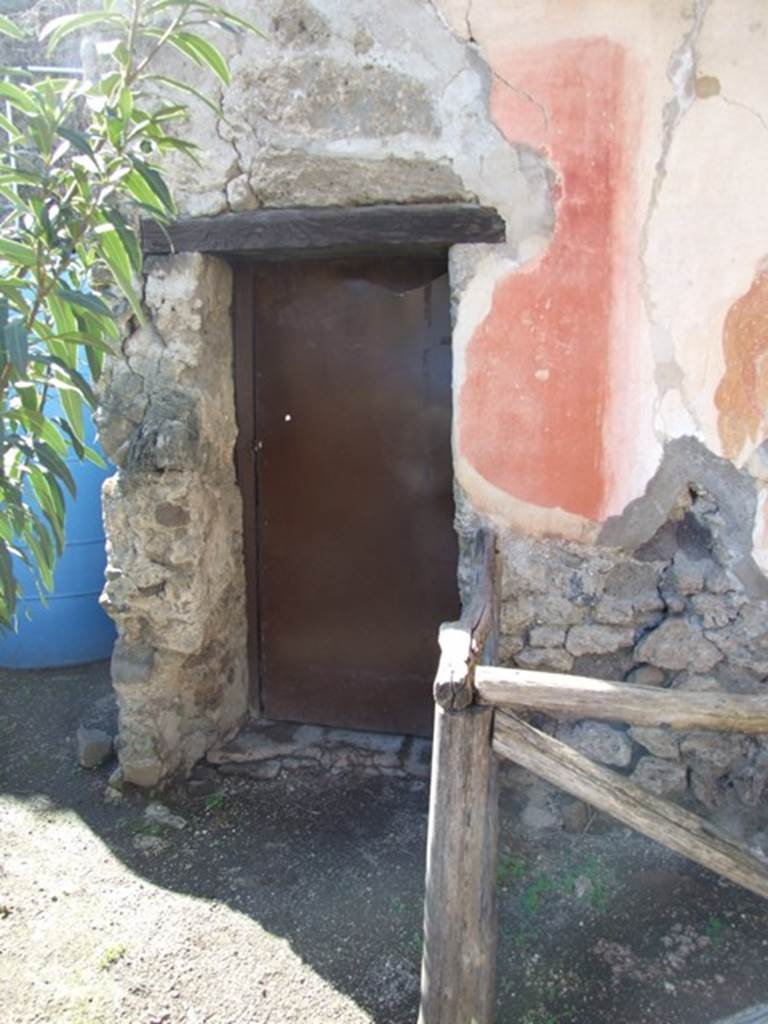
VIII.5.15 Pompeii. March 2009. Room 2, flooring of triclinium in north-west corner.
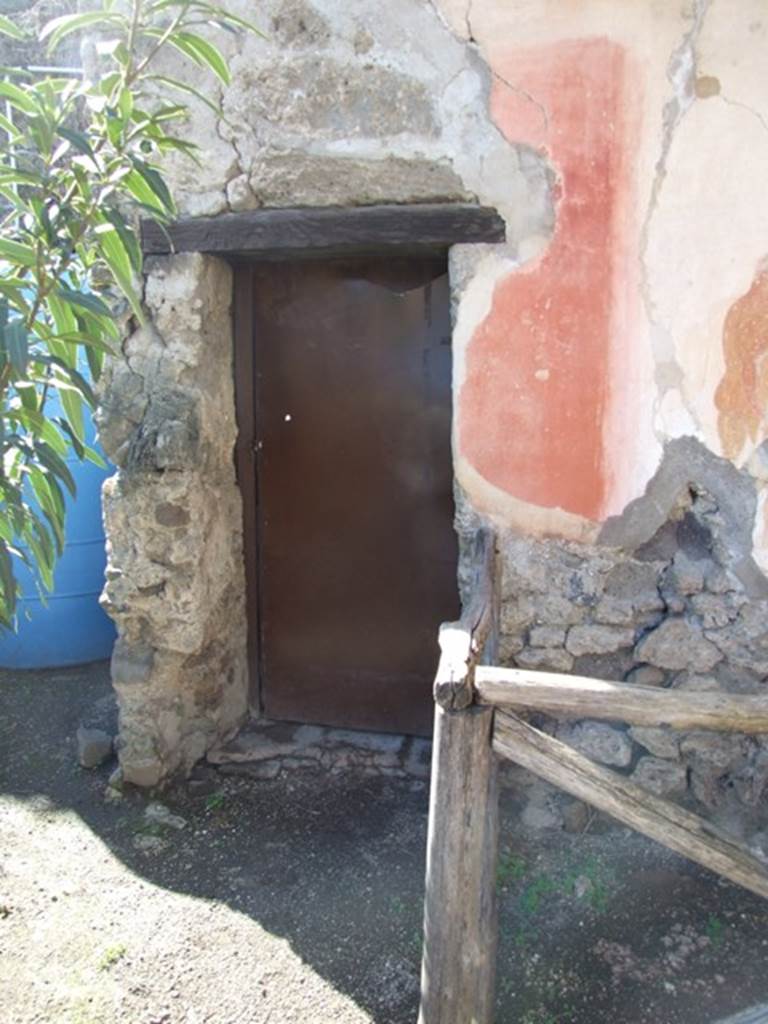
VIII.5.15 Pompeii. March 2009. Doorway to room 7, a corridor.
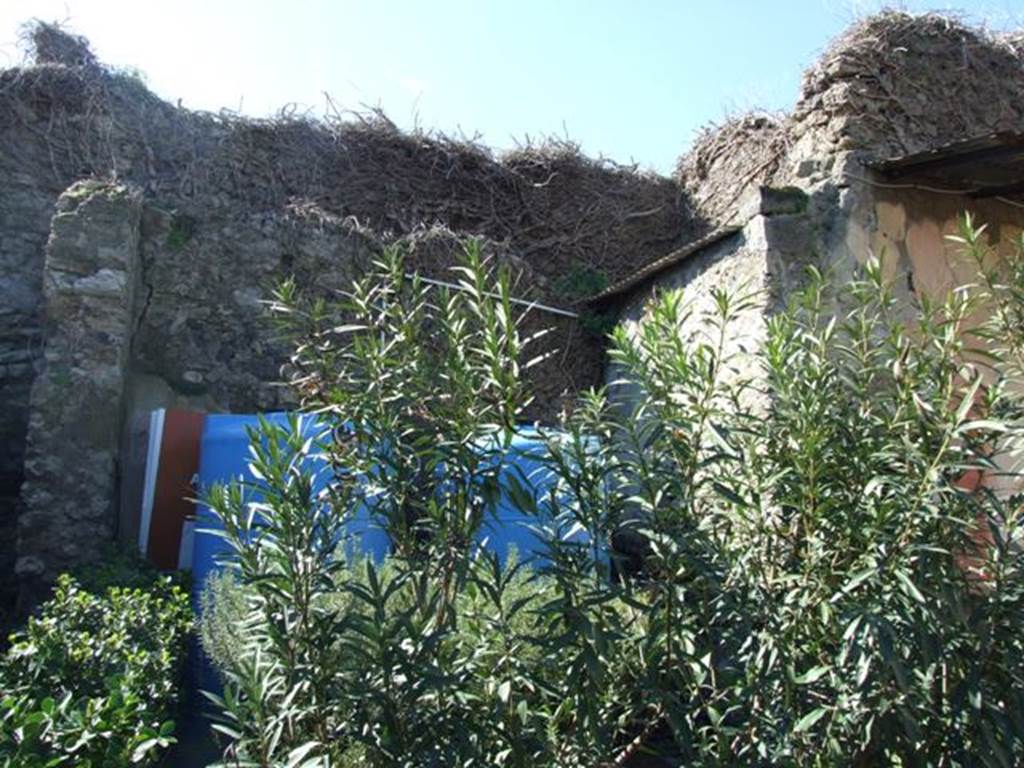
VIII.5.15 Pompeii. October 2022. Room 7, corridor. Photo courtesy of Klaus Heese.
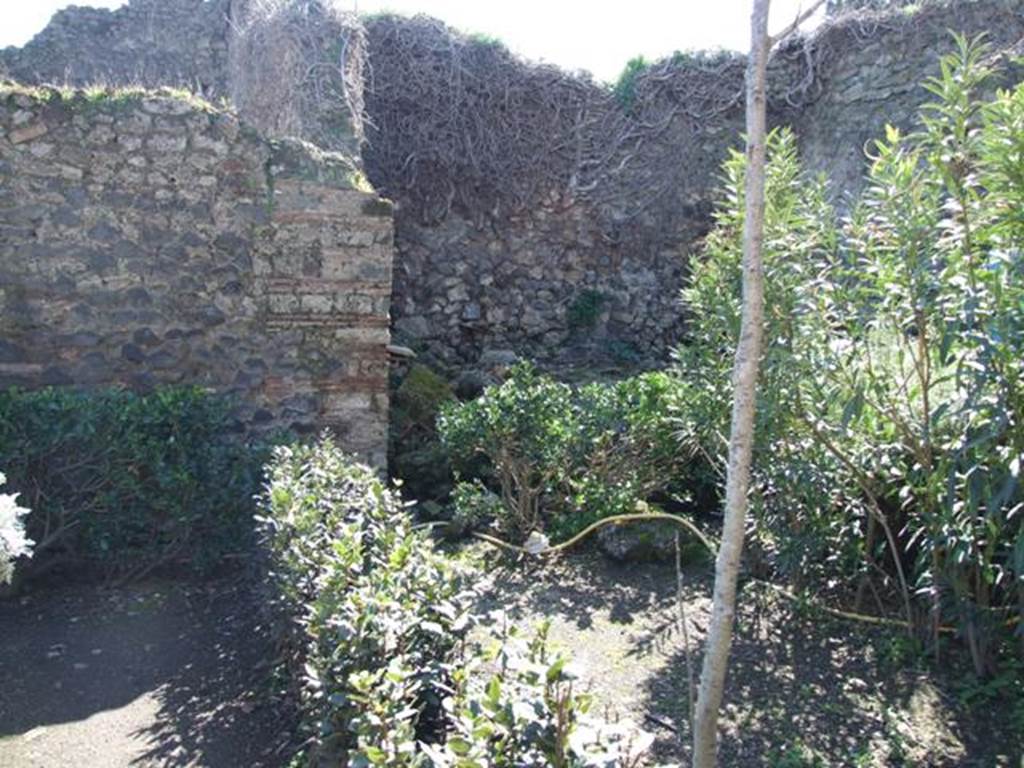
VIII.5.15 Pompeii. March 2009. West end of room 2.
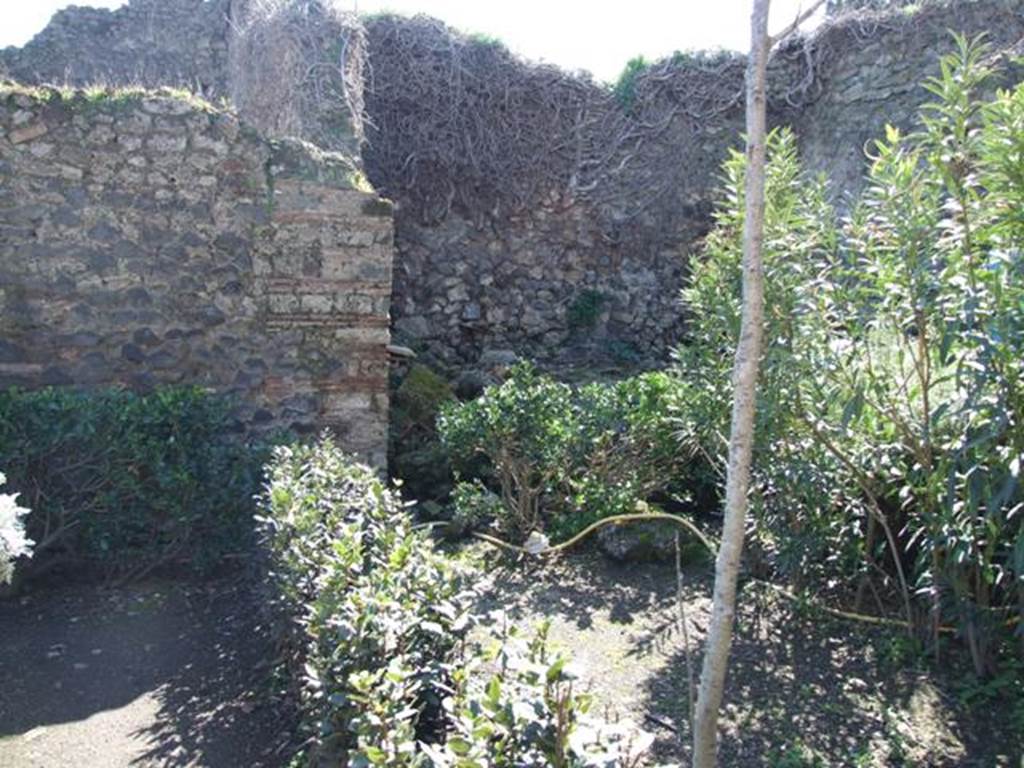
VIII.5.15 Pompeii. March 2009. Rooms 5 and 6, looking south.
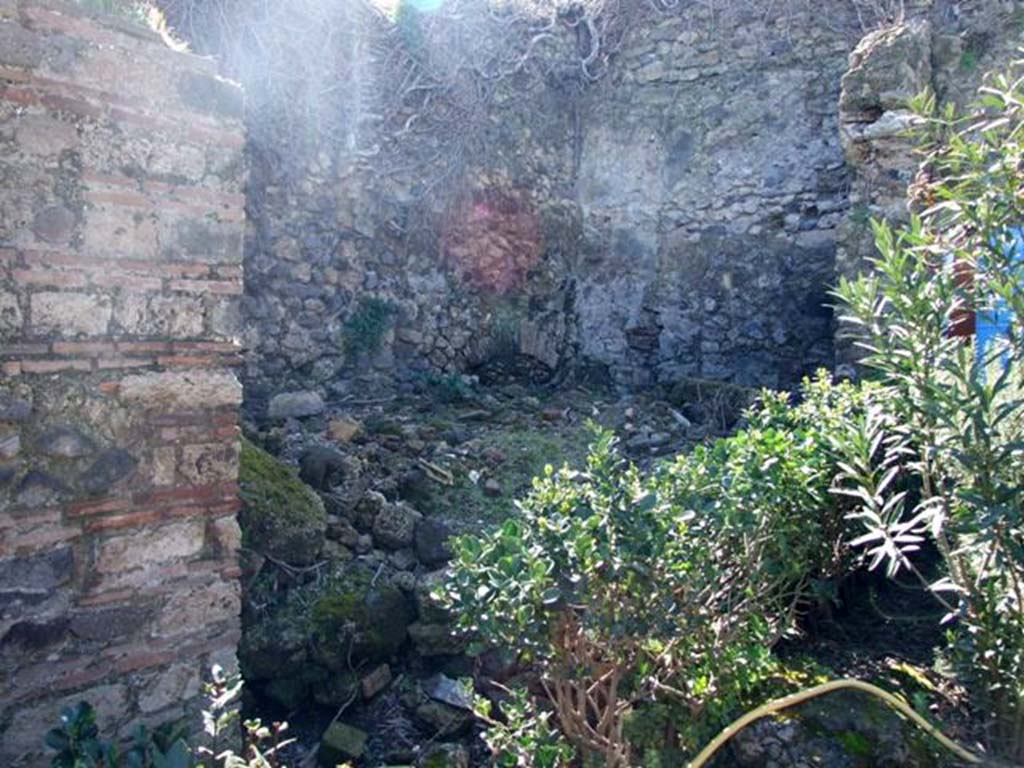
VIII.5.15 Pompeii. March 2009. Rooms 5 and 6.